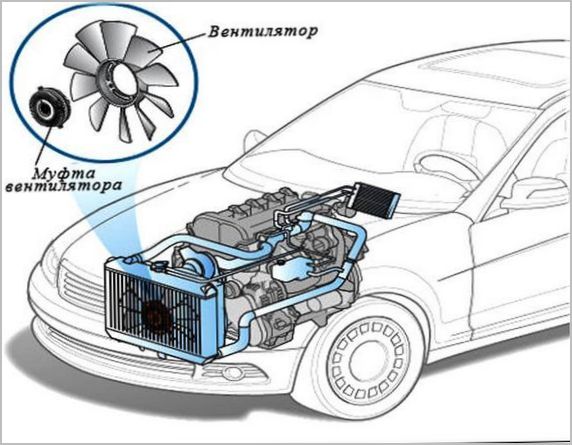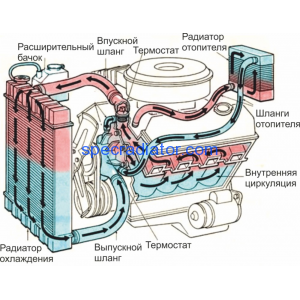
Antifreeze Mixing Recommendations
Content
The need to replenish the fluid level in the engine cooling system occurs quite often, and, as a rule, for those drivers who monitor the car and periodically look under the hood to check the oil level, brake fluid and look at the expansion tank for one.
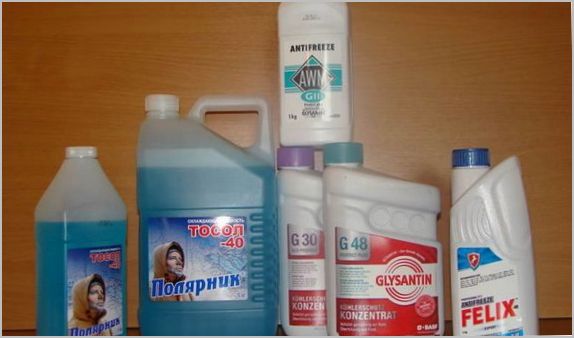
Auto shops offer a wide variety of antifreeze from different manufacturers, colors and brands. Which one to buy “for topping up”, if there is no information about the substance that was poured into the system earlier? Can antifreeze be mixed? We will try to answer this question in detail.
What is antifreeze
Automotive antifreeze is a non-freezing liquid that circulates in the cooling system and protects the engine from overheating.
All antifreezes are a mixture of glycol compounds with water and inhibitor additives that give the antifreeze anti-corrosion, anti-cavitation and anti-foam properties. Sometimes additives contain a fluorescent component that makes it easier to find leaks.
Most antifreeze contains 35 to 50% water and boils at 1100C. In this case, vapor locks appear in the cooling system, reducing its efficiency and leading to overheating of the motor.
On a warm running engine, the pressure in a working cooling system is much higher than atmospheric pressure, so the boiling point rises.
Car manufacturers in different countries have developed many options for antifreeze formulations.
The modern market is guided by the specification of Volkswagen. According to the VW specification, antifreezes are divided into five categories - G11, G12, G12 +, G12 ++, G13.
Such designations have established themselves on the market and are indicated in the instructions for cars.
Brief description of coolant classes
So, the description of the coolant according to the VW specification:
- G11. Traditional coolants made from ethylene glycol and water with silicate additives. Poisonous. Colored green or blue.
- G12. Carboxylate coolants based on ethylene glycol or monoethylene glycol with modifying organic additives. They have improved heat transfer properties. Red liquid. Poisonous.
- G12+. Hybrid coolants with organic (carboxylate) and inorganic (silicate, acid) additives. Combine the positive qualities of both types of additives. Poisonous. Color - red.
- G12++. Hybrid coolants. The base is ethylene glycol (monoethylene glycol) with organic and mineral additives. Effectively protects the components of the cooling system and the engine block. Red liquid. Poisonous.
- G13. A new generation of antifreezes called "lobrid". A mixture of water and harmless propylene glycol, sometimes with the addition of glycerin. Contains a complex of carboxylate additives. Environmentally friendly. Color red, red-violet.
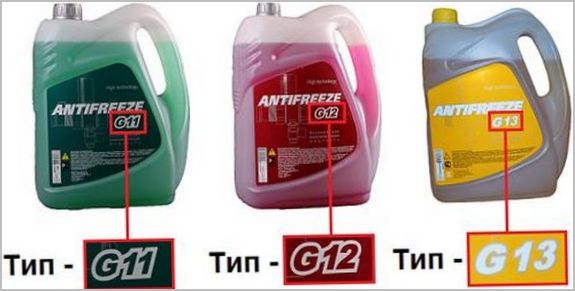
Is it allowed to mix coolants of different colors
The color of antifreeze does not always allow it to be attributed to a particular class. The main purpose of the dye is to facilitate the search for leaks and determine the level of coolant in the tank. The bright colors also warn of the dangers of "ingestion". Most manufacturers are guided by marketing standards, but nothing prevents them from painting the coolant in an arbitrary color.
Determining the coolant class by the color of the sample taken from the cooling system is not entirely reliable. After prolonged use of coolants, their dyes decompose and may change color. It is safer to focus on the manufacturer's instructions or entries in the service book.
A conscientious master who carried out maintenance with the replacement of antifreeze will definitely stick a piece of paper on the tank indicating the brand and class of the liquid he filled in.
Quite confidently, you can mix "blue" and "green" liquids of class G11, which include domestic Tosol. In this case, the proportions of water and ethylene glycol will change, as will the properties of the coolant itself, but there will be no immediate deterioration in the operation of the cooling system.

When mixing classes G11 and G12, as a result of the interaction of additives, acids and insoluble compounds are formed that precipitate. Acids are aggressive towards rubber and polymer pipes, hoses and seals, and the sludge will clog the channels in the block head, the stove radiator and fill the lower tank of the engine cooling radiator. Coolant circulation will be disrupted with all the serious consequences.
It is worth remembering that class G11 coolants, including the native Tosol of all brands, were developed for engines with a cast-iron cylinder block, copper or brass radiators. For a modern engine, with radiators and an aluminum alloy block, “green” liquids can only harm.
Antifreeze components are prone to natural evaporation and boil-off when the engine is running under heavy loads for a long time or at high speeds on long trips. The resulting water and ethylene glycol vapor under pressure in the system leaves through the "breathing" valve in the cap of the expansion tank.
If "topping up" is necessary, it is better to use a liquid not only of the desired class, but also of the same manufacturer.
In critical situations, when the coolant level has fallen below the permissible level, for example, on a long journey, you can use the “life hack” of previous generations and fill the system with clean water. Water, with its high heat capacity and low viscosity, would be an excellent coolant if it did not cause corrosion of metals. After adding water, keep moving, looking at the temperature gauge more often than usual and avoiding long frosty stops.
When pouring water into the cooling system, or “red” antifreeze of dubious origin bought at a roadside stall, remember that at the end of the trip you will have to change the coolant, with the obligatory flushing of the cooling system.
Antifreeze compatibility
The possibility of mixing antifreezes of different classes is indicated in the table.
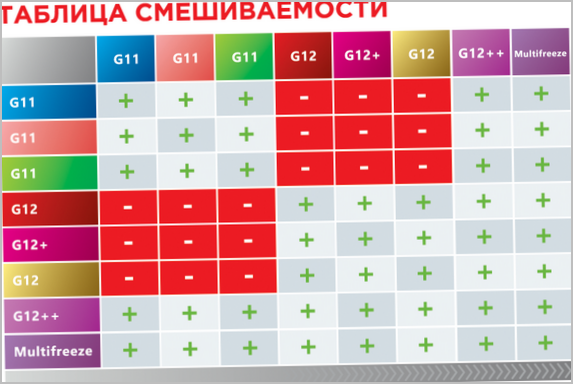
Classes G11 and G12 cannot be mixed, they use conflicting additive packages; Easy to remember:
- G13 and G12++, which contain hybrid type additives, are compatible with any other classes.
After mixing incompatible liquids, it is necessary to flush the cooling system and replace the coolant with the recommended one.
How to check compatibility
Self-checking antifreeze for compatibility is simple and does not require special methods.
Take samples - equal in volume - of the liquid in the system and the one that you decided to add. Mix in a clear bowl and observe the solution. To verify the study, the mixture can be heated to 80-90°C. If after 5-10 minutes the original color began to change to brown, the transparency decreased, foam or sediment appeared, the result is negative, the liquids are incompatible.
Mixing and adding antifreeze must be guided by the instructions in the manual, using only recommended classes and brands.
Focusing only on the color of liquids is not worth it. The well-known concern BASF, for example, produces most of its products in yellow, and the color of Japanese liquids indicates their frost resistance.
